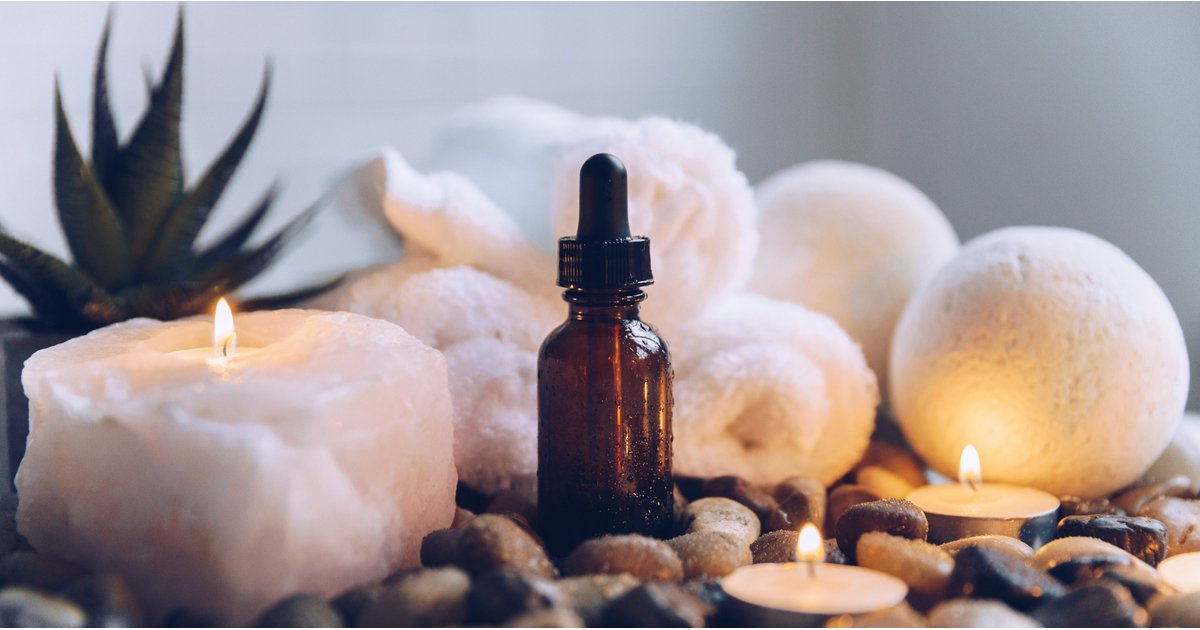Cure The Winter Blues: Surefire Ways To Beat Seasonal Affective Disorder
While some cannot wait for the summer to end so they can light a fire, put on cozy socks, and drink hot chocolate; others are already missing the warm sun, beaches, BBQs, and flip-flops. Cold days can have a certain gloominess about them, but if a person is feeling more blue than usual, they could be suffering from S.A.D. (Seasonal Affective Disorder). It is not as serious as it sounds, there are many simple solutions for S.A.D. This list will disclose what can cause it, its symptoms, and a variety of solutions to cure the lower moods brought on by cold winter days.
What Is Seasonal Affective Disorder?

It is not only the cold that makes the winter a little less cheery than the summer; the shorter and darker days also play their part. It is normal to feel less energetic, but if the symptoms shown are similar to the signs of depression, one might be suffering from a syndrome that is, in fact, a seasonal-type depression.
Seasonal Affective Disorder is directly linked to a decrease in exposure to sunlight. It typically occurs in the fall, getting increasingly worse in the winter. It is believed there is a gene which causes some people to be predisposed to Seasonal Affective Disorder, so when someone says that it is not in their nature to enjoy a snowstorm, they might be right after all.
The Symptoms

SAD symptoms are not that different from that of depression; difficulty getting out of bed, overeating, and lack of energy can all be connected to it. There could also be a decrease in activity, trouble keeping focused, and irritability. Extreme cases will also include hopelessness and worthlessness, withdrawal from social interaction, and even thoughts of suicide.
Most SAD sufferers already experience a depressive disorder, but the symptoms become more apparent seasonally. Although it is more common for SAD to appear during the colder months, some experience it during the spring and summer instead - with a slight difference in the symptoms, which are insomnia rather than trouble getting out of bed, and weight loss instead of weight gain.
Light Therapy

Since SAD was first identified as a disorder, many research studies were conducted to find solutions. One of the best solutions was created through the advances of technology; phototherapy devices like dawn simulators are powerful lamps that turn on as the sun comes up providing exposure to its strong bulbs for 30 minutes each morning. Doctors have claimed that the results are as powerful and effective as an antidepressant.
One of the reasons that make this kind of therapy work is that when an individual is exposed to light in the early morning, it helps to regulate their circadian rhythm. These lamps are common in Nordic countries as they are more affected by winter days than those near the tropic lines.
Winter Holidays

An alternative way to get some light therapy is to go on winter holidays. Booking a flight to a state which is less affected by the cold weather or even a country in a different hemisphere can dramatically change one's mood. It will likely cost more than a dawn simulator, but vacations are not only about the weather; the benefits of sunlight exposure are gained while also making memories that last a lifetime. Instead of traveling during the summer, SAD sufferers could save their annual trips until the winter and end up getting two doses of summer every year.
Exercising

Exercise has been used to fight depression for a long time. It's been proven that even a light workout can raise endorphins, which gives a positive feeling as well as more energy. It may be hard to get out of bed, but once the workout begins the body will soon warm up and there will be no need for a blanket. If the weather is preventing exercising outside, opt for a routine that could be practiced in the house or go to the nearest gym for a class or to use their equipment. Changing up the workout scenery is also important for mood-boosting.
Do Not Abuse Carbs

Comfort food normally includes plenty of carbs and sugar, but these will only add to existing feelings of fatigue. The cold weather increases cravings for warm, hearty, fat-rich foods, but as tempting as it may be to follow a pasta and cookies diet, avoiding foods that can cause bloating is the best option. Those who suffer from SAD should save the indulgent food for the special holiday meals, and fill their daily diet with healthy fats, energy-boosting snacks, and other comforting yet healthy foods like a warm bowl of vegetable soup. Unhealthy treats may feel good at the moment, but abusing them will only worsen the symptoms of SAD.
Seek Help

If these tricks are not enough to help deal with SAD and the winter blues, the situation might be a bit more serious. A doctor will be able to offer the professional advice needed to help treat a challenging case of SAD They might prescribe an antidepressant or try alternative ways to deal with it, depending on the patient's own signs and symptoms. The important thing is to seek professional treatment if the symptoms of SAD are interfering with life.
Talk Therapy

Once a patient has taken the first steps to seek help if they are struggling with symptoms of SAD, and have tried light therapy and antidepressants, a doctor may suggest trying psychotherapy or talk therapy. One form that is popular is cognitive behavioral therapy, where the individual learns behavioral skills, such as doing something enjoyable every day during the winter season, how to manage their stress and triggers appropriately and to be aware and change any negative thoughts that occur.
Considering SAD is a type of depression, a proper diagnosis will come from a mental health professional. The professional will ask a series of screening questions that can help determine if a person is depressed, and what type they may be dealing with, including SAD.
Get More Sunlight

For some individuals with SAD, they may be experiencing low blood levels of vitamin D, which naturally comes from sunlight. For an individual to improve their vitamin D levels, it is suggested that they get outside and catch some rays of sunlight when the sun is shining. Go for an afternoon stroll for a few minutes or a run in the park, as the sun is at its peak around noon. If it is too cold to venture outside for some natural light, try sitting beside a sunny window for a few minutes a day, either relaxing or reading. Another alternative is to go suntanning for a couple of minutes once or twice a week, however, be aware that too much and strong UV light, such as from a tanning bed, increases the chances of developing skin cancer.
Another way to receive more sunlight is by using dawn simulators, which can help some individuals with SAD. Specifically, these devices are alarm clocks that gradually wake up an individual with light that grows in intensity, mirroring the effects of the sun. Different models are available, but the best ones use full-spectrum light, which is the closest to natural sunlight. A study done by Russian researchers published in the Journal of Affective Disorders discovered that these simulators were as effective as light therapy for patients with a mild form of SAD.
Sources Of Vitamin D

For some individuals with SAD, they may be experiencing low blood levels of vitamin D, which naturally comes from sunlight. To improve vitamin D levels within the body, an individual should get outside for some natural rays of light. Low levels of vitamin D are connected to SAD, as research published in the Journal of Medical Hypotheses confirmed this theory. Another study in the journal Nutrients also discovered that individuals who consumed vitamin D supplements saw a significant improvement in their depression symptoms.
Besides natural sunlight, a great substitute for increasing your daily intake of vitamin D is either through supplementation or foods, such as cheese, egg yolks, orange juice, fatty fish, beef liver, and fortified dairy products. Speak to your physician about your vitamin D levels and if taking supplements is appropriate for you.
Establish A Sleep Routine

Sleep is essential for optimal health, especially for mental health. For those dealing with SAD, it is ideal that they try and get between seven and nine hours of quality shut-eye each night, so they may spend more time awake, and hopefully enjoying the sunshine. Unfortunately, many individuals who have SAD often experience sleep difficulties at night and with getting up in the morning.
By maintaining a regular sleep schedule, a patient will be able to improve their sleeping patterns, which can help alleviate symptoms of SAD. By keeping a regular sleeping schedule, they will be able to ensure they are exposed to enough light throughout the day, ensuring this exposure stays consistent and predictable.
Aromatherapy

Using aromatherapy candles, essential oils, or bath bombs are also another alternative for decreasing a patient’s SAD symptoms. Essential oils and candles can influence the part of the brain that is responsible for controlling an individual’s moods and the body’s internal clock, which controls sleeping and eating patterns. Not to mention, certain scents are known to help relieve stress, reduce feelings of anxiety and depression, and promote a restful sleep, such as lavender, vanilla, cedarwood, lemon, jasmine, rosemary, sandalwood, bergamot, ylang-ylang, and chamomile. Trying adding a few drops of essential oils to a bath at night to promote relaxation, or burn a candle throughout the day that is infused with essential oils to promote mental stability and clarity.
Medications

Another way for those living with SAD to find relief from their symptoms is to take specific medications that can help suppress feelings of anxiety and depression while stabilizing their moods. Antidepressants, also known as selective serotonin reuptake inhibitors (SSRIs), are generally prescribed for patients with SAD. Common examples of these medications include citalopram, sertraline, fluoxetine, escitalopram, and paroxetine.
The U.S. Food and Drug Administration has also approved another type of antidepressant known as bupropion to treat SAD, which is an alternative option for those who want to avoid the side effects of SSRIs such as weight gain and loss of libido. A physician may inform a patient to begin taking these medications before their symptoms fully appear, for instance, a month to several weeks in advance, for the individual to feel the full effect of these medications.
